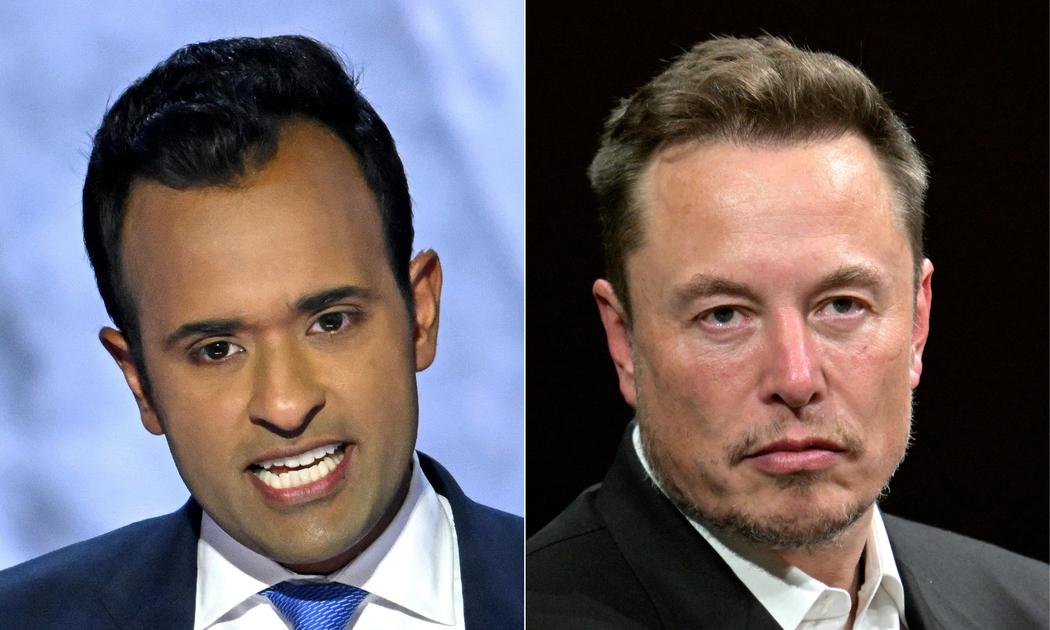
Billionaires Elon Musk and Vivek Ramaswamy are sharing details about how their newly created Department of Government Efficiency — which isn’t an official government department — plans to take aim at paring federal spending, with the two writing in a Wall Street Journal opinion piece on Wednesday that they are aiming to cut $500 billion in annual spending.
The announcement of DOGE has raised a host of questions, from whether Musk and Ramaswamy will have the authority to make changes in federal spending, typically controlled by Congress, as well as the group’s powers and how it will operate. Musk and Ramaswamy provided answers to some of those questions in their opinion piece, arguing that President-elect Donald Trump has the authority to cut spending authorized by Congress.
While Musk and Ramaswamy said they “expect to prevail” in cutting costs, there have been plenty of examples throughout the decades of efforts aimed at reining in federal spending, which have had only limited results. For instance, President Ronald Reagan in the 1980s tapped businessman J. Peter Grace to recommend reforms, resulting in about 2,500 recommendations for cutting spending, most of which were never implemented.
Musk has suggested slicing $2 trillion in annual federal spending, an amount experts say is unrealistic given that most of the nation’s $6.7 trillion in yearly outlays is spent on Social Security, Medicare and the military.
But in the Wednesday opinion piece, Musk and Ramaswamy wrote that their initial aim will be to cut “the $500 billion plus in annual federal expenditures that are unauthorized by Congress or being used in ways that Congress never intended.”
Here’s what to know.
Where will Musk’s DOGE aim to cut federal spending?
Two-thirds of federal spending is mandatory through programs including Social Security and Medicare, while discretionary spending is largely spent on defense.
But as mentioned above, Musk and Ramaswamy said they’ll target $500 billion in spending that is unauthorized by Congress, as well as programs they believe aren’t in line with lawmakers’ intentions.
The biggest source of expired authorizations sits with health care for veterans, which cost $119 billion in fiscal 2024, according to the Congressional Budget Office.
However, Musk and Ramaswamy didn’t single out veterans’ health care as a place where they’d seek to cut. Instead, they listed the following areas:
- The Corporation for Public Broadcasting, which receives $535 million a year
- International organizations that receive $1.5 billion in grants
- Planned Parenthood and what they describe as “progressive groups” that receive almost $300 million per year
Which federal programs don’t have authorization?
The programs mentioned by Musk and Ramaswamy are relatively tiny compared with other areas that are unauthorized, such as veterans’ health care.
The next biggest sources of expired authorizations, after veterans’ health care, include programs that invest in opioid treatment, the State Department and housing assistance. Some smaller programs with expired funding include Head Start, NASA and the National Oceanic and Atmospheric Administration, or NOAA. The latter provides weather forecasts, severe storm warnings and climate monitoring, among other tasks.
According to Project 2025, the conservative blueprint that was developed by the Heritage Foundation to guide the next conservative White House, the NOAA “should be dismantled and many of its functions eliminated.”
DOGE wants to cut federal workers. Here’s how.
Musk and Ramaswamy also underscored that they’ll push to cut the ranks of federal employees, saying their efforts could lead to “mass head-count reductions across the federal bureaucracy.” The pair didn’t enumerate the number of workers they’ll seek to push out of the federal workforce.
In 2023, there were more than 2 million federal employees, according to the Partnership for Public Service, a nonpartisan group focused on the federal government. Most of those workers are within Veterans Affairs, due to a large number of health care providers for the VA, followed by people enlisted in the armed services, its data shows.
While civil service workers have job protections, Musk and Ramaswamy argued that the president would be legally allowed to enact “reductions in force” that don’t target specific workers, as well as to make decisions including “large-scale firings to relocation of federal agencies out of the Washington area.”
The DOGE would help federal employees “transition into the private sector,” Musk and Ramaswamy wrote. “The president can use existing laws to give them incentives for early retirement and to make voluntary severance payments to facilitate a graceful exit.”
The pair also said they want to require federal workers to be in the office five days a week, a policy change that they predict would “result in a wave of voluntary terminations.”
In a Thursday post on X, the social media service owned by Elon Musk, the DOGE wrote, “Federal government agencies are using, on average, just 12% of the space in their DC headquarters. The Department of Agriculture, with space for more than 7,400 people, averaged 456 workers each day (6% occupancy).”
It added, “Why are American taxpayer dollars being spent to maintain empty buildings?”
How much do federal workers earn?
Pay varies by department and seniority, with the federal government publishing a General Schedule of basic pay grades for most federal employees. For 2024, the lowest pay grade was about $22,000 in annual earnings, while the highest was about $160,000. Some agencies offer competitive salaries to compete with the private sector. Pay may also vary by location.
Federal employees are located in every state, with 80% located outside the Washington, D.C. area, according to the Partnership for Public Service.
Workers at the Administrative Conference of the United States, an independent federal agency charged with identifying improvements for federal agencies to protect public interests, have the highest median salary, at about $242,000, according to federal data. That’s followed by employees at the American Battle Monuments Commission, with a median salary of about $228,000.
Employees at the U.S. Commission on International Religious Freedom, which monitors the freedom of religion outside the U.S., have the lowest median salaries, at about $60,000.



